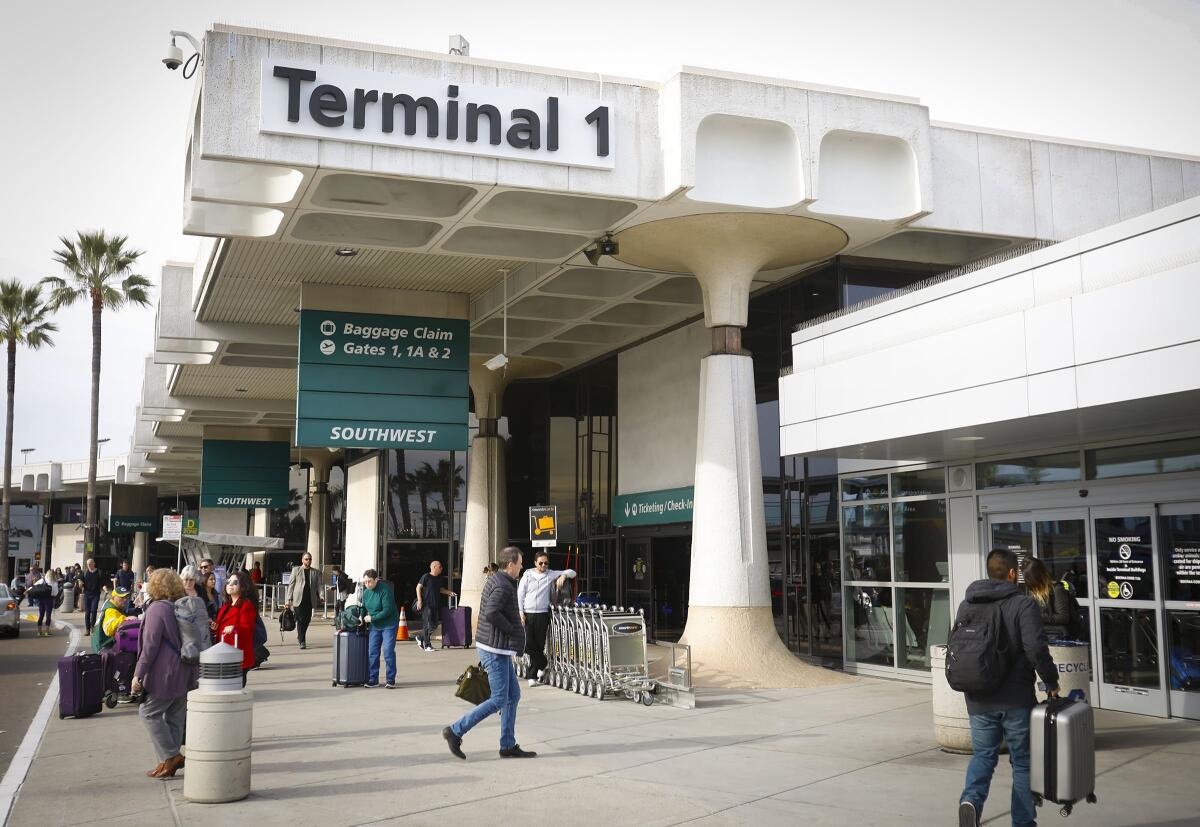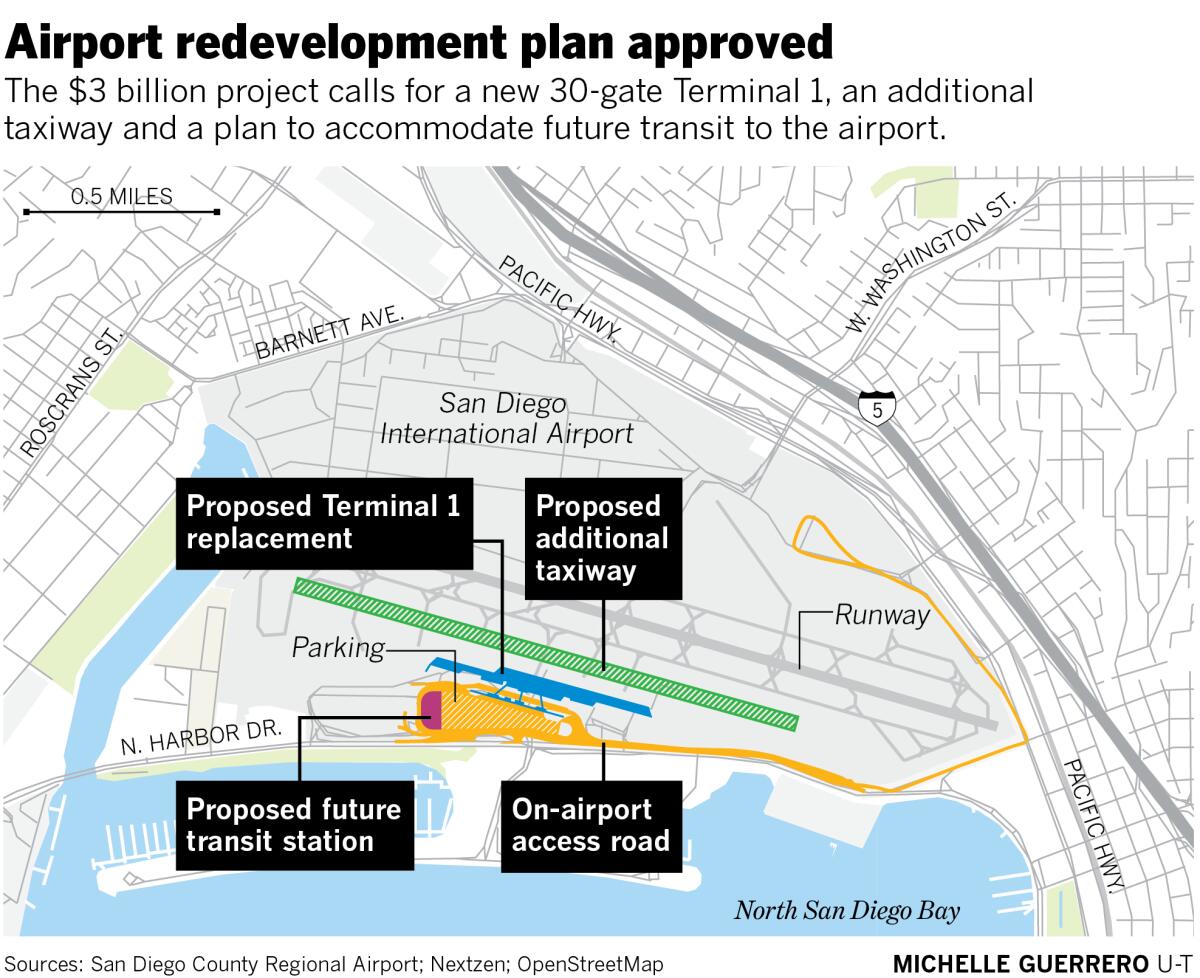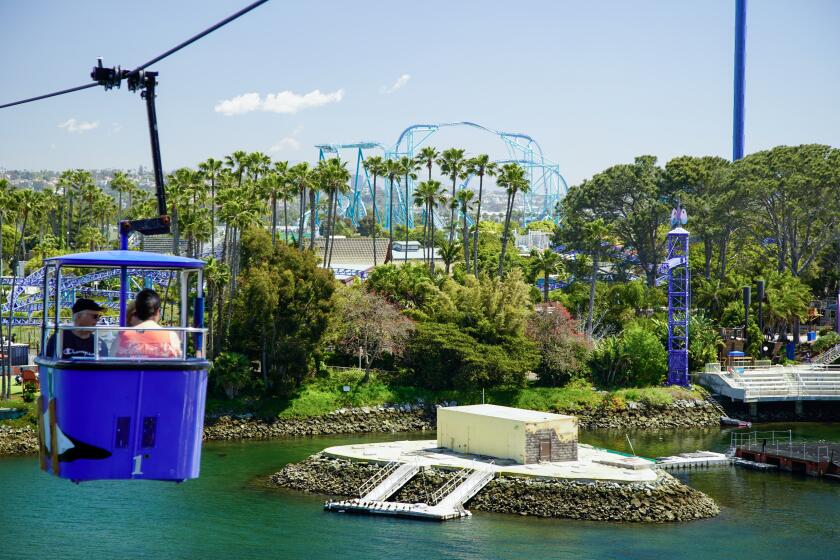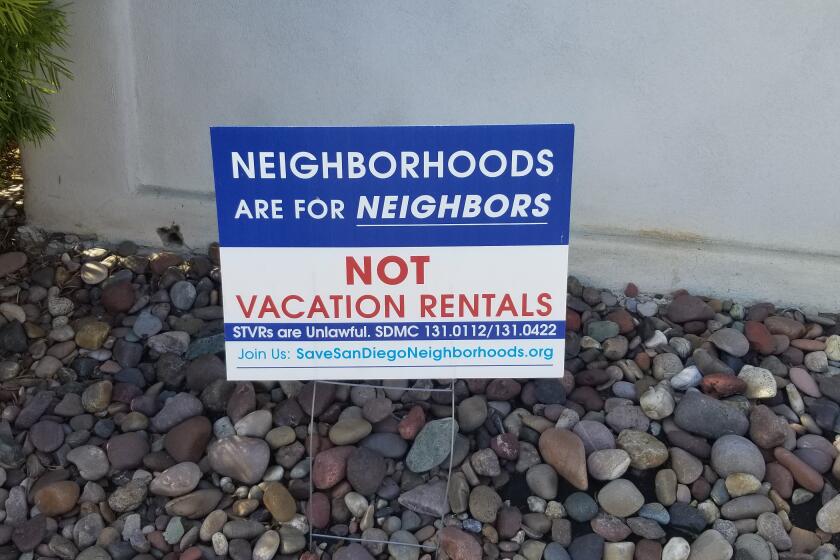$3B plan to replace San Diego airport’s aging Terminal 1 reaches major milestone

Airport Authority approves plans to add 11 gates to Terminal 1, plus a new taxiway and access road that will remove 45,000 cars a day from Harbor Drive
San Diego International Airport’s 1960’s-era Terminal 1 will be replaced with a 30-gate facility more than triple the current size under a $3 billion redevelopment plan approved Thursday by the airport’s governing board.
While much remains to be done before construction could get underway late next year — including hiring a contractor and securing California Coastal Commission approval — airport officials believe the first stage of the new terminal could open by 2024. Full completion of all 30 gates —11 more than the existing 19 — is expected two years later.
Thursday’s action, which included certifying the project’s 9,500-page environmental analysis, marks a dramatic turnaround from more than a year ago when the San Diego County Regional Airport Authority was warring with multiple state and local agencies who claimed it had failed to address the increased traffic congestion that would inevitably come from heavier passenger volumes.
Airport leaders listened, and in a move that ended up delaying the project by a year, agreed to not only rewrite the environmental document but also make a number of changes to their long-planned project. Key among them was making room for and funding a future transit station to be located near Terminals 1 and 2.
They’ve also collaborated with other agencies on a grand vision for bringing a people mover or trolley to the airport and are seeking approval from the Federal Aviation Administration to use airport money on improving more than a dozen San Diego roads and intersections.
Still, with or without the planned redevelopment, San Diego’s single-runway airport, which has seen five consecutive years of record growth, is expected to reach maximum passenger capacity — about 40 million — within the next two decades. Last year, the airport served roughly 25 million passengers.
“What’s driving activity here is not the number of gates but the desire to come to San Diego,” said Dennis Probst, vice president of development for the airport. “The airlines are providing the flights and will fill them up, and that is not going to change whether we do the project or not.”
The airlines and the fees they pay for renting terminal space, plus revenues from parking, concessions and passenger facility charges, will pay for the costly project. Southwest Airlines, the largest of the airport’s air carriers, operates out of Terminal 1.
“Honestly, if it weren’t for our airline partners, we wouldn’t be sitting here having this conversation because there wouldn’t be any money to build it,” said April Boling, who chairs the Airport Authority board. “It took a while for our airline partners to understand that we were really going to have to deal with and accommodate the needs of the public to get to the airport. This just wasn’t a matter of a building — that is, a terminal and some air-side improvements. There was really a lot more to building a regional asset like this.”

Last year, the airport secured a pledge from the airlines to commit $350 million toward off-airport transportation projects, which could include high-speed transit.
Key components of the airport project approved Thursday include:
- An entirely new 1.2 million-square-foot Terminal 1 that will be on par with the renovated and expanded Terminal 2 project completed in 2013. Aircraft arrivals and baggage claim will be on the lower level, with ticketing, security screening, seating areas and concessions on the upper level.
- A new 5,500-space parking garage.
- Relocation of the existing taxiway and construction of a second taxiway to allow for easier movement of arriving and departing aircraft.
- A reserved site for a future transit station if and when a people mover or an extension of the San Diego trolley is brought to the airport.
- A new three-lane airport access road from Laurel Street and North Harbor Drive that airport planners say would remove 45,000 vehicle trips per day from Harbor Drive. The airport will also reserve right-of-way for a future three-lane outbound roadway.
- A new administration building on the far west side of the airport that will replace the current offices, now located in the former commuter terminal.
- A free shuttle service between the Old Town transit center and the airport.
During Thursday’s hearing, no one spoke out against the project or its environmental impact report, although a number of individuals and groups representing San Diego communities have sent letters to the Airport Authority objecting to what they say will be increased noise and air pollution as the number of flight operations continue to grow.
“The SDCRAA (Airport Authority), FAA and the airlines are focused on increasing their revenues and profits at the expense of our impacted communities,” wrote the Peninsula Community Planning Board, which represents the Ocean Beach and Point Loma area communities. “They want more flight operations to handle more passengers, but without regard for the impacts on those affected.”
While the Airport Authority’s environmental impact report addresses in great detail issues related to such areas as noise, traffic and greenhouse gases, it concludes that impacts will remain significant even after mitigation measures are taken. Airport staffers, however, point out that those impacts would be even worse if nothing were done to improve airport operations, which will require that measures be taken to offset growth at the airport.
Southwest Airlines appeared before the Airport Authority encouraging it to move forward with the project.
“Air passenger volumes will continue to grow regardless of whether Terminal 1 is replaced,” said Steve Sisneros, managing director for airport affairs. “The FAA and the marketplace dictate how many airplanes can take off and land. However, a new Terminal 1 and airfield improvements will ensure that the airport can provide a better experience for passengers as their numbers increase.”
Among the many steps the airport will take to try to soften the impact of more flights out of Lindbergh Field is an expansion of its residential sound insulation program. Under the so-called Quieter Home Program, eligible residents can have their windows and doors replaced to reduce outside noise from aircraft.
Get U-T Business in your inbox on Mondays
Get ready for your week with the week’s top business stories from San Diego and California, in your inbox Monday mornings.
You may occasionally receive promotional content from the San Diego Union-Tribune.












